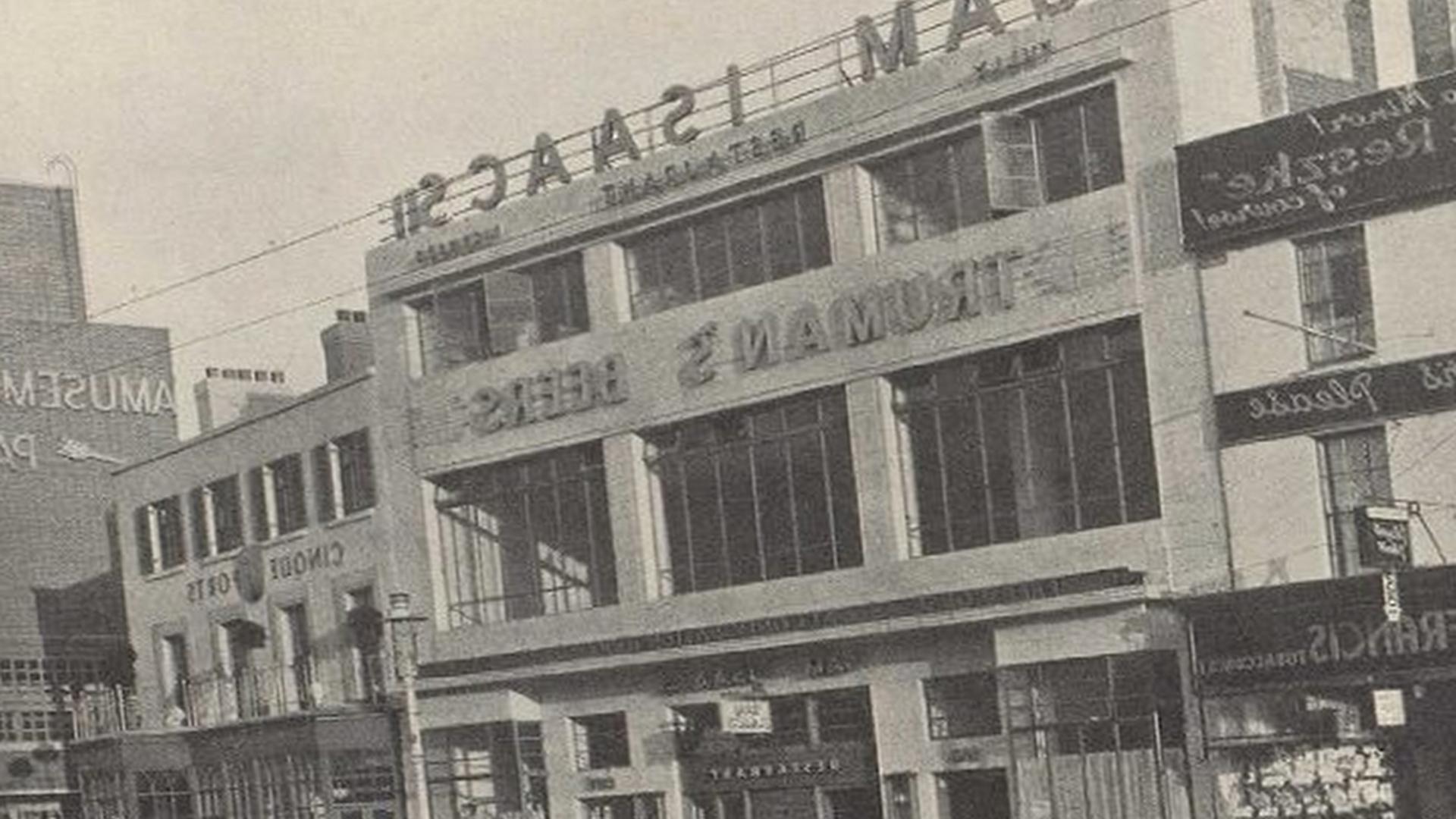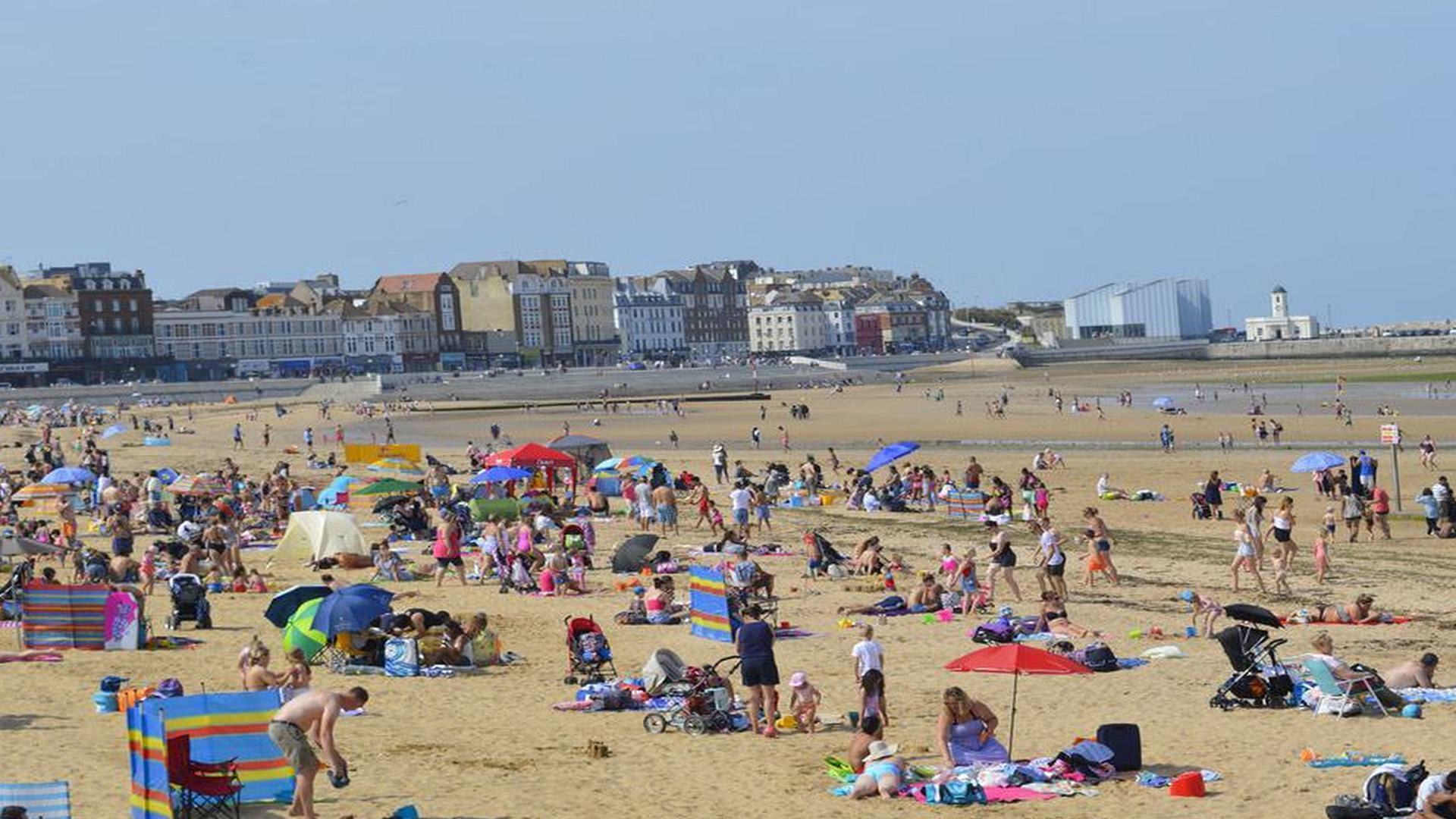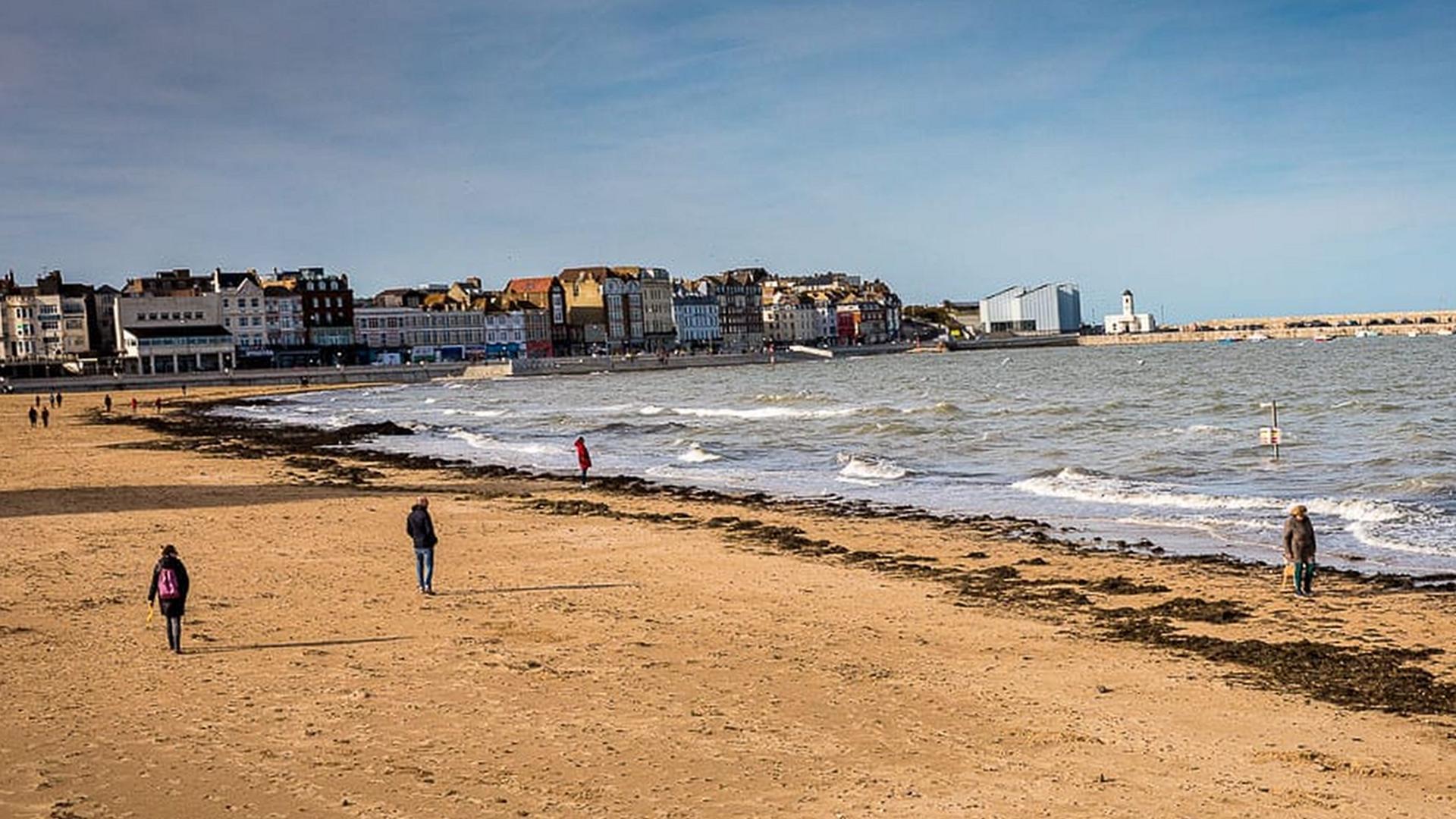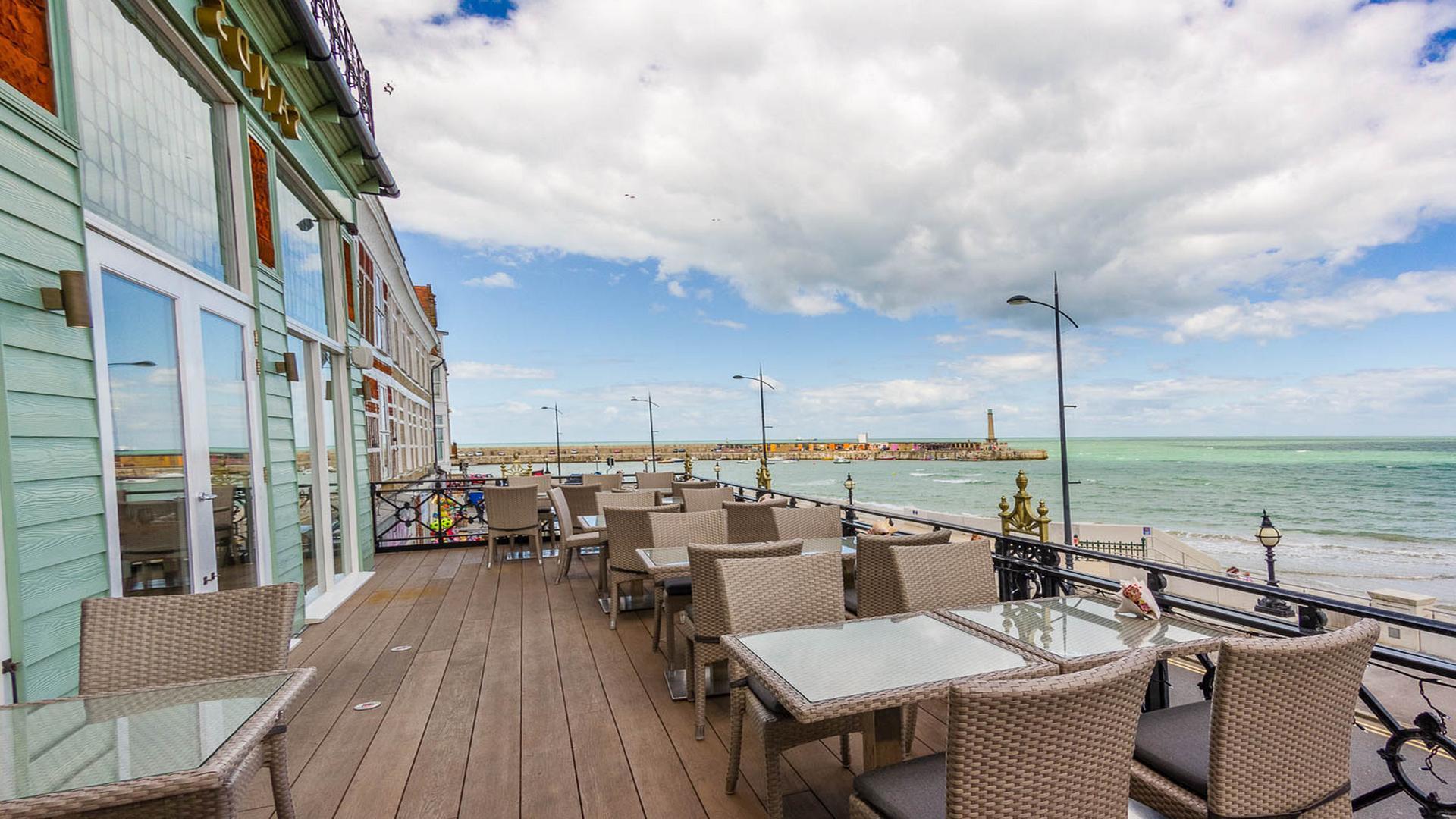The History Of Margate
/the-history-of-margate
Dreamland And The Scenic Railway
The Scenic Railway is a historic wooden roller coaster located in the Dreamland Amusement Park in Margate, Kent, England. Constructed in 1920, the roller coaster currently holds the title of being the oldest roller coaster in the United Kingdom. The ride consists of two identical tracks and trains, allowing four trains to operate at a time on opposite tracks giving passengers two separate experiences. Originally designed by Eugen Schmitz M. A., the roller coaster has many original features including a corrugated iron tower, 6-foot 3-inch (1.
91 m) high drop and large Easter egg brakes which have been modified with an additional set of shoes, This is Margate (thisismargate.co.uk). To preserve its heritage status both track and structure were awarded Grade II listed status on. Dreamland is a 31-acre (13 ha) leisure complex situated close to the town centre of Margate, Kent. It had two piers – South and Central. Dreamland opened as an amusement park in 1920, but its heyday was in the 1920s and 1930s.
In 2006 Dreamland closed after operating with losses for a decade. In late 2014 it was announced that major investment was being put into bringing it back to life under its owners The Pleasure Beach Group. Dreamland and the Scenic Railway, which were originally located in Southport, on the North side of Stanley Park, opened in 1901. The first roller coaster, Vauxhall, opened in 1923. It was joined by a second, smaller coaster called Dodgem, in 1925 after a fire damaged Vauxhall.
Both coasters had their wooden tracks replaced with steel in 1935. The Scenic Railway is a wooden roller coaster situated in the Dreamland Park area of Margate. It is custom-built to keep with the amusement park's nostalgic past, and has been in operation since 1920, making it the oldest roller coaster operating in the United Kingdom. The Scenic Railway roller coaster was built in 1920 and has been well maintained ever since, so there is no fear of riding it.
The track in itself is a work of art that you can admire as the ride progresses and twists and turns around itself. Dreamland is a Pleasure Beach in Morecambe, Lancashire. Built in 1921 on the seafront at North End, it was a smaller version of Blackpool Pleasure Beach but with one important difference: It had the UK's first Scenic Railway roller coaster. Run by Claire and Ella from Kent, it's a far cry from the greasy spoons of Margate's past.
Margate And The Sea
Although the town has become somewhat downmarket, it can boast to having one of the oldest theatres in Britain, and even today many top performers appear there. The Granville Hotel is a prominent feature of Margate sea front, and in recent years the town has played host to a number of music festivals – most notably the Greatness of Margate festival. " Margate is connected with Victorian history through the characters of Charles Dickens and the artist Sir Edward John Poynter, R.
A., who painted a celebrated portrait of Queen Victoria overlooking the sea and entitled it "Queen Victoria's Harbour Master", a name by which many old residents still know this delightful old town. The earliest reference to Margate is in the "Annals of St Neots", which record for the year 767 "the earth trembled, and one half of the sea fled to the west as far as the place called Gaeta; and so did one half of the town, and in like manner also the other.
" The origin of this name has been debated. In the 1960s Margate enjoyed an Indian summer as a mecca of the mods, and in the 1970s as a clothing optional resort. Margate's resurgence as a tourist destination has been nothing short of remarkable, culminating in the news that the Turner Contemporary gallery is set to stay in the town thanks to a major £15m redevelopment pledged by the local council. ~~~~. However, there are fewer services on weekends compared to Monday Friday.
Margate During The Second World War
The house in Romney Road he was billeted to had been requisitioned by the Admiralty. It belonged to a Mr & Mrs Ralph Allen of the famous Margate biscuit family, and the flat was occupied by civilians. On 4 September 1940, Hillary was brought ashore at Margate and transferred to Canterbury Hospital for treatment at 1930 hours. As he was on fire when rescued he sustained burns to his hands, face, upper torso and thighs – with other burns being superficial and caused by flying debris during the crash landing.
He was a "priority" case as his injuries were so serious. Like many of the servicemen who were treated at the hospital during the Second World War, he would be sent to RAF Hospital Uxbridge. During a German bombing raid on Uxbridge, Hillary was in the bathroom receiving treatment for his burns when a bomb landed near the building (he was one of two people in that room to survive – though he had been very close to death).
Margate Jetty
It was the life's work of Eugenius Birch, Chief Engineer for John Powell's Isle of Thanet Estate. After two years in the making, it opened in 1856. Over fifty feet high and almost that long, it extended out from Margate Sands across the channel to the Isle of Thanet. There was an open deck at its outer end with a row of cottages built on to it. At the Margate end there were two pavilions: The first had a canvas roof, seats and a bar; the second was similar but added a stage for such entertainments as boxing matches and concerts.
In 1860 there were nine steamers permanently moored to serve as ferries and private vessels too large for other berths. Stretching out to 1,878 feet (564 m), this jetty once laced the beaches of Margate with attractive promenades. Now, visitors can only see the structure of the pier from afar as much of it has been damaged or dismantled by weather conditions and strong waves. However, the poor condition of this seaside landmark hasn't stopped many visitors from making their way down to the beach each year.
Railways
The SER then erected a terminus at Margate Sands, which would be replaced by the present Margate railway station. The first floor contained the engine room and the ground floor was used as a goods shed. A passenger service operated between Ramsgate & Margate Sands from 1846-1853. In 1854 the SER built another railway line to Broadstairs, Isle of Thanet, 16 km (10 mi) long, running on to Minster via Newport. Both railways were later extended: in 1860 the line from Broadstairs was extended to Canterbury West; in 1880 the line between Chalk Street and Broadstairs was opened; later that year, the line from Birling Junction to Margate.
In 1888 an electric tramway was added operating. The London, Chatham and Dover Railway (LCDR), which incorporated the older South Eastern Railway, was the next to arrive, from Canterbury via a line opened on 18 June 1859. The SER had originally applied to Parliament for powers to build a branch to Margate but, in 1846, changed its plans and proposed a rival direct main line route with an Ashford terminus that was nearer London. Opposition from the LCDR and Ramsgate interests led to Parliament forcing the SER to alter its route once more and build the line as far as Margate Sands, although an Act of 1848 authorised the LCDR to build a branch instead.
Storm Of 1949
The sea was very rough from the Saturday night [On Saturday 20th March 1949 the East Anglian coast was battered by high winds and waves up to 20 feet high. ] and into Sunday morning. About 11 o'clock I saw the water coming over the wall. At one time it was clearing the wall by about three yards, there was so much water running down the road. All my neighbours were taking their furniture out of their houses and putting it on top of their washing machines and things like that to try and preserve them.
My brother, who has just bought a bungalow in Crescent Road, had to get his furniture out of his home before it was flooded. The water level in our house rose up to two inches deep but. Neville Coleman, a Margate resident interviewed by the BBC for a Storm of '49 programme on Radio 4 in 1999, recalled the impact inside his house. The flood water was chest deep on the ground floor of his house and came within inches of drowning his wife Kaye.
They were trapped in their front room while all around them the floors and ceilings were being ripped out by the force of more than three feet of water. When they finally found daylight through an upstairs window after two hours of total darkness they looked down over a sea that stretched to the horizon with boats sailing down the middle of Crayford High Street. In late February and early March, a series of storms brought gales, high tides and storms.
The town of Margate was flooded twice in February. The King's Head had to be evacuated when it was inundated at the end of February. At 2:50a. m., on Saturday 3 March, an extra high tide brought flooding to the town centre. The storm of early March 1949 caused extensive damage over Kent. The high tide caused flooding at various points between Margate and Crayford. At Sandgate houses were inundated and traffic was stopped by the high water on the A2 road.
There was flooding in Chatham, Folkestone, Dover, Sandwich and Maidstone. On 23 August 1941 Hillary died at RAF Uxbridge from his injuries. During his 1930s convalescence, Richard Hillary met and became friendly with fellow burn-patient Duncan Grinnell-Milne. Both men spent many hours on the sands, and in surrounding towns and villages, together, during which time they discussed their desire to pursue a career in the military; both signed up to join the Royal Air Force when they were discharged from hospital.
Windmills
Today Margate is most famous for its three windmills. St Peter’s was built in 1808 by John Cock, after he had fed his workers when no grain came in on the harvest boat, and earned local fame when it appeared in Turner’s celebrated painting of Margate Sands. However the Prince of Wales Public House now sits on the site of this windmill, and no trace of it can be seen. The earliest known reference to a windmill in the area is 1614, when there was a dispute between the inhabitants of Margate and St.
Essenden concerning one on the cliff edge at St. Patricks Bay. The disputants were ordered by the Court of Chancery to submit to arbitration and have it demolished if its location infringed the town boundary. There were many windmills in the parish of Margate during the first half of the 19th century, including one at Cliftonville. The one that remains is at St John's Street, situated within a small park surrounded by trees. It dates back to 1803 and was erected exactly ten years after Thomas Paine's death.
Forest Gate, the western part of which was once known as Farningham Village, has two of Margate's remaining windmills. Holywell Mill, also known as Temple Mill, and Alibon Windmill is about ½ a mile (800 m) from the seafront. The Gate Windmill is situated in the centre of Margate. The earliest windmill in the town was built as early as 1638 and stood on a site near St Georges Church, close to the railway. A mill was recorded there as long ago as 1296.



